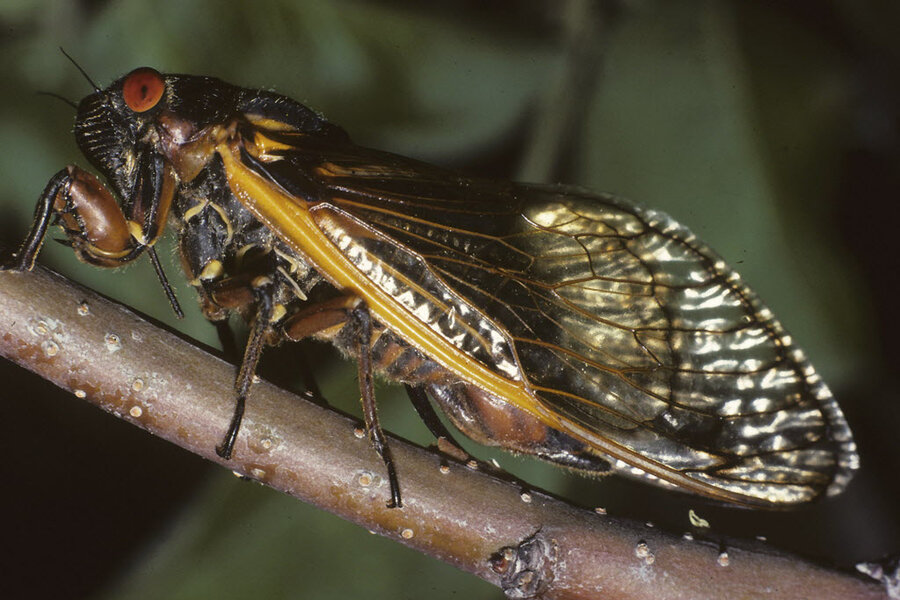East Coast readies for colossal numbers of cicadas
Loading...
| Hamden, Conn.
Colossal numbers of cicadas, unhurriedly growing underground since 1996, are about to emerge along much of the US East Coast to begin passionately singing and mating as their remarkable life cycle restarts.
This year heralds the springtime emergence of billions of so-called 17-year periodical cicadas, with their distinctive black bodies, buggy red eyes, and orange-veined wings, along a roughly 900-mile stretch from northern Georgia to upstate New York.
The eerie, cacophonous mating music they produce, along with the unusual synchronous mass emergence and lengthy development cycles, have amazed scientists and lay people alike for centuries.
In central Connecticut, particularly dense concentrations of so-called Brood II cicadas, named Magicicada septendecim, should arrive in late May or June, says Chris Maier, entomologist with the Connecticut Agricultural Experiment Station in New Haven.
This will be Maier's third time studying their emergence - he tracked them in 1979 and again in 1996. He said they are next due in 2030, when he will be 81 years old.
Maier said the first scientific recording of Brood II specimens was in 1843.
The precisely-timed arrival of the 1.5-inch plant-sucking, flying adults takes place after a lengthy period of development underground as juveniles.
After maturing, males begin what cicadas may be best known for: their conspicuous acoustic signals, or "songs," to sexually attract females.
"When there's a lot of them together, it's like this hovering noise. It sounds exactly like flying saucers from a 1950s movie," Chris Simon, professor of ecology and evolutionary biology at the University of Connecticut, said on Thursday.
When they suddenly emerge, the cicadas will be visible "on the sides of the trees, on the sides of the house, on the shrubbery - even on the car tires," said Simon.
Magicicada population densities - from tens of thousands of cicadas per acre to 1.5 million per acre - are much higher than they are with other cicada species.
One theory behind their bizarre but sustainable life cycle is that their emergence produces such overwhelming numbers at once that predators, such as birds, spiders, snakes, and even dogs, can't eat them all.
To create their unique choruses, male cicadas use ribbed tymbal membranes on their abdomens to produce sounds, while females - lacking tymbals - click or snap their wings. This clamor is all done by July.
Although boisterous, cicadas do not sting or bite, and they aren't harmful to crops. But they may cause damage to young, small trees or shrubs, if too many feed from the plants or lay eggs in their twigs, according to research published at www.magicicada.org.
After mating occurs, females lay their eggs on twigs; the eggs hatch later in the season, and the nymphs drop to the ground and burrow underground to restart the 17-year cycle.
Juveniles subsist on xylem, or root fluid, for food. But xylem has poor nutritional value for nymphs, which is one reason scientists theorize that juvenile periodical cicadas develop so slowly.
Every 17th year, a few weeks before emerging, the cicadas build exit tunnels to the surface. When the soil temperature exceeds 64 degrees Fahrenheit, nymphs leave their burrows usually after sunset, settle on a nearby tree or shrub, and start their final molt to adulthood.







